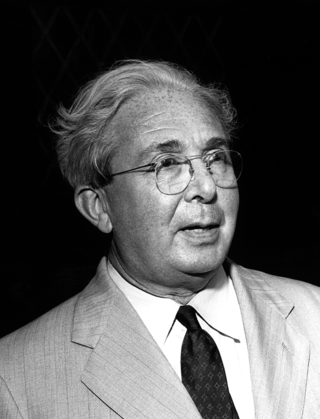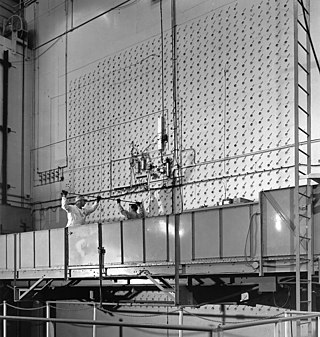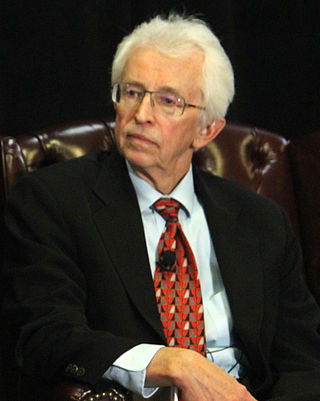See also
- Philip J. Withers – British materials scientist (born 1963)
- David Knowles (engineer) – researcher, ORCiD ID=0000-0001-9392-7902
- Roger Reed – researcher and university teacher
- Who's Who (UK) – British biographical dictionary
Professor James Marrow | |
|---|---|
| Born | Thomas James Marrow 23 November 1966 [1] Bromborough, England |
| Education | University of Cambridge (MA, Ph.D) [2] |
| Scientific career | |
| Fields | Materials science specialised in Ceramic matrix composite Nuclear graphite [3] Micromechanics [4] [5] Physical metallurgy [6] Fatigue and Fracture mechanics [2] X-ray crystallography including XCT and Synchrotron radiation [4] [5] |
| Institutions | University of Oxford [7] |
| Thesis | Fatigue mechanisms in an embrittled duplex stainless steel (1991) |
| Doctoral advisor | Julia E. King |
| Website | Materials Department |
Thomas James Marrow (born 23 November 1966) is a British scientist who is a professor of nuclear materials at the University of Oxford and holds the James Martin Chair in Energy Materials. [8] He specialises in physical metallurgy, micromechanics, and X-ray crystallography of engineering materials, mainly ceramic matrix composite and nuclear graphite. [9] [10] [6]
James Marrow was born on 23 November 1966 in Bromborough, Wirral to John Williams Marrow and Mary Elizabeth Marrow. [1] He attended Wirral Grammar School for Boys, [1] then graduated with a 1st Class Honours Master of Arts (M.A) in Natural Sciences (Materials Science) from the University of Cambridge in 1988, where he was a student at Clare College, Cambridge [6] before pursuing and completing a Doctor of Philosophy degree in 1991. [2] During his PhD, he studied the Fatigue mechanisms in embrittled duplex stainless steel and was supervised by Julia King. [11]
From 1992 to 1993, Marrow was appointed as postdoctoral research associate in the Department of Materials, University of Oxford, and a junior research fellow at Linacre College, Oxford, but moved with an Engineering and Physical Sciences Research Council (EPSRC) postdoctoral research fellowship to the School of Metallurgy and Materials, University of Birmingham. [6] [12] In 2001, he joined the Manchester Materials Science Centre, University of Manchester, as senior lecturer in physical metallurgy, where he became assistant director of Materials Performance Centre in 2002 and the director in 2009. [6] [12]
Marrow moved to the University of Oxford to become Oxford Martin School co-director of the school programme in Nuclear and Energy Materials from 2010 to 2015, [8] Professor in Energy Materials, Department of Materials, Oxford University, [7] and Fellow of Mansfield College, Oxford. [13] As of August 2023 [update] , Marrow is the Associate Head of Department of Materials (Teaching). [7]
Marrow is a council member of the UK Forum for Engineering Structural Integrity (FESI), [14] UK representative for the European Energy Research Alliance Joint Programme on Nuclear Materials, member (ex-chair) of the OECD-NEA Expert Group on Innovative Structural Materials, independent advisor to the UK Office of Nuclear Regulation on materials/structural integrity, and UK representative on Graphite for BEIS to the Generation IV International Forum. [13] [3] Marrow is the co-director of the Nuclear Research Centre (NRC), which is a joint venture between the University of Bristol and the University of Oxford to train new nuclear scientists and engineers. [15]
Marrow married Daiva Kojelyte in 1998 and he is a father of a son and a daughter.
Marrow's research focuses on the degradation of structural materials, the role of microstructure, and the mechanisms of materials ageing. A key aspect is the investigation of fundamental mechanisms of damage accumulation - including irradiation - using novel materials characterisation techniques. This has concentrated recently on computed X-ray tomography and strain mapping by digital image correlation and digital volume correlation, together with X-ray and neutron diffraction. [5] He applies these techniques to study the degradation of Generation IV nuclear materials [9] such as graphite and silicon carbide composites, as well as new materials for electrical energy storage. [7] [3] [4]
Marrow is part of I'm a Scientist, Get me out of here! energy generation zone. [16] He has also been a key developer and academic consultant for the Dissemination of IT for the Promotion of Materials Science (DoITPoMS). [17] Global Cycle Network Technology (GCN Tech) interviewed James about carbon fibre fatigue and strain in 2022. [18]

Leo Szilard was a Hungarian born physicist and inventor. He conceived the nuclear chain reaction in 1933, patented the idea in 1936, and in late 1939 wrote the letter for Albert Einstein's signature that resulted in the Manhattan Project that built the atomic bomb. According to György Marx, he was one of the Hungarian scientists known as The Martians.

The pebble-bed reactor (PBR) is a design for a graphite-moderated, gas-cooled nuclear reactor. It is a type of very-high-temperature reactor (VHTR), one of the six classes of nuclear reactors in the Generation IV initiative.

The Atomic Energy Research Establishment (AERE) was the main centre for atomic energy research and development in the United Kingdom from 1946 to the 1990s. It was created, owned and funded by the British Government.

Julia Elizabeth King, Baroness Brown of Cambridge, is a British engineer and a crossbench member of the House of Lords, where she chairs the Select Committee on Science and Technology. She is the incumbent chair of the Carbon Trust and the Henry Royce Institute, and was the vice-chancellor of Aston University from 2006 to 2016.

Chicago Pile-1 (CP-1) was the world's first artificial nuclear reactor. On 2 December 1942, the first human-made self-sustaining nuclear chain reaction was initiated in CP-1 during an experiment led by Enrico Fermi. The secret development of the reactor was the first major technical achievement for the Manhattan Project, the Allied effort to create nuclear weapons during World War II. Developed by the Metallurgical Laboratory at the University of Chicago, CP-1 was built under the west viewing stands of the original Stagg Field. Although the project's civilian and military leaders had misgivings about the possibility of a disastrous runaway reaction, they trusted Fermi's safety calculations and decided they could carry out the experiment in a densely populated area. Fermi described the reactor as "a crude pile of black bricks and wooden timbers".

The Metallurgical Laboratory was a scientific laboratory at the University of Chicago that was established in February 1942 to study and use the newly discovered chemical element plutonium. It researched plutonium's chemistry and metallurgy, designed the world's first nuclear reactors to produce it, and developed chemical processes to separate it from other elements. In August 1942 the lab's chemical section was the first to chemically separate a weighable sample of plutonium, and on 2 December 1942, the Met Lab produced the first controlled nuclear chain reaction, in the reactor Chicago Pile-1, which was constructed under the stands of the university's old football stadium, Stagg Field.

The Department of Materials at the University of Oxford, England was founded in the 1950s as the Department of Metallurgy, by William Hume-Rothery, who was a reader in Oxford's Department of Inorganic Chemistry. It is part of the university's Mathematical, Physical and Life Sciences Division

George David William Smith FRS, FIMMM, FInstP, FRSC, CEng is a materials scientist with special interest in the study of the microstructure, composition and properties of engineering materials at the atomic level. He invented, together with Alfred Cerezo and Terry Godfrey, the Atom-Probe Tomograph in 1988.

The X-10 Graphite Reactor is a decommissioned nuclear reactor at Oak Ridge National Laboratory in Oak Ridge, Tennessee. Formerly known as the Clinton Pile and X-10 Pile, it was the world's second artificial nuclear reactor, and the first designed and built for continuous operation. It was built during World War II as part of the Manhattan Project.
Applied mechanics is the branch of science concerned with the motion of any substance that can be experienced or perceived by humans without the help of instruments. In short, when mechanics concepts surpass being theoretical and are applied and executed, general mechanics becomes applied mechanics. It is this stark difference that makes applied mechanics an essential understanding for practical everyday life. It has numerous applications in a wide variety of fields and disciplines, including but not limited to structural engineering, astronomy, oceanography, meteorology, hydraulics, mechanical engineering, aerospace engineering, nanotechnology, structural design, earthquake engineering, fluid dynamics, planetary sciences, and other life sciences. Connecting research between numerous disciplines, applied mechanics plays an important role in both science and engineering.

Siegfried S. Hecker is an American metallurgist and nuclear scientist. He served as Director of the Los Alamos National Laboratory from 1986 to 1997 and is now affiliated with Stanford University, where he is research professor emeritus in the Department of Management Science and Engineering in the School of Engineering, and senior fellow emeritus at the Freeman Spogli Institute for International Studies. During this time, he was also elected a member of the National Academy of Engineering (1988) for outstanding research on plutonium and the forming of materials, and for leadership in developing energy and weapons systems.
Dr. Ramulu Mamidala is a mechanical engineering professor at University of Washington. Usually goes by the name 'Ram', or 'M.R.', he is recognized for his leadership and outstanding record in promoting collaborative education and research with industry. He is currently the director of Manufacturing Science and Technology Laboratory (MSTL) at Mechanical Engineering Department, University of Washington. He has designed and developed manufacturing methods for a wide range of systems, from the B2 bomber to the Boeing 787. Additionally, in collaboration with industry, he established and directed two interdisciplinary graduate educational programs in engineering and management and a certificate program in composites tooling and manufacturing. His exemplary collaborative efforts motivated working engineers to pursue doctoral studies and he is a leader in using emerging technologies in distance education to reach non-traditional students.

Sir Alan Howard Cottrell, FRS was an English metallurgist and physicist. He was also former Chief Scientific Advisor to the UK Government and vice-chancellor of Cambridge University 1977–1979.
Palle Rama Rao FREng is an Indian scientist noted for his contribution to the field of Physical and Mechanical Metallurgy. He has collaborated and conducted research activities for over dozen universities and associations all over India and abroad. He has been honoured with the titles of Padma Vibhushan in 2011 by president of India for his contributions to scientific community. He is acting as the chairman, Governing Council, International Advanced Research Centre for Powder Metallurgy & New Materials (ARCI), Hyderabad.

Raymond Edward Smallman was a British metallurgist and academic known for his research into alloys and the causes of metal fatigue. Smallman was also a significant figure at the University of Birmingham, serving as its vice-principal between 1987 and 1992 and helping to establish its reputation as a leading modern research university.

Roger Charles Reed is a Professor of Engineering Science and Materials at the University of Oxford. He works at Oxford's Begbroke Science Park, and is associated with its Departments of Engineering Science and Materials. He is a Fellow at St. Anne's College, Oxford.

Robert Oliver Ritchie is the H.T. and Jessie Chua Distinguished Professor of Engineering at the University of California, Berkeley and senior faculty scientist at the Lawrence Berkeley National Laboratory.

The Department of Materials is responsible for the teaching and research in materials science and engineering at Imperial College London, occupying the Royal School of Mines and Bessemer buildings on the South Kensington campus. It can trace its origins back to the metallurgy department of the Government School of Mines and Science applied to the Arts, founded in 1851.

Filippo Berto is an Italian professor and engineer, who works on fracture mechanics and fatigue design for which he received several prestigious international awards. According to Scopus, in 2021, Berot published 179 articles, approximately an article every two days.

Professor David Knowles FREng FIMMM is Professor of Nuclear Engineering at the University of Bristol and Chief Executive of the UK's Henry Royce Institute for advanced materials research. From 2016 to 2019, he was the co-director of the South West Nuclear Hub, and Atkins Fellow. His work focusses primarily on understanding and modelling the degradation mechanisms in metallic materials and their interrelation with the structural integrity of rotating and static equipment in the energy sector.